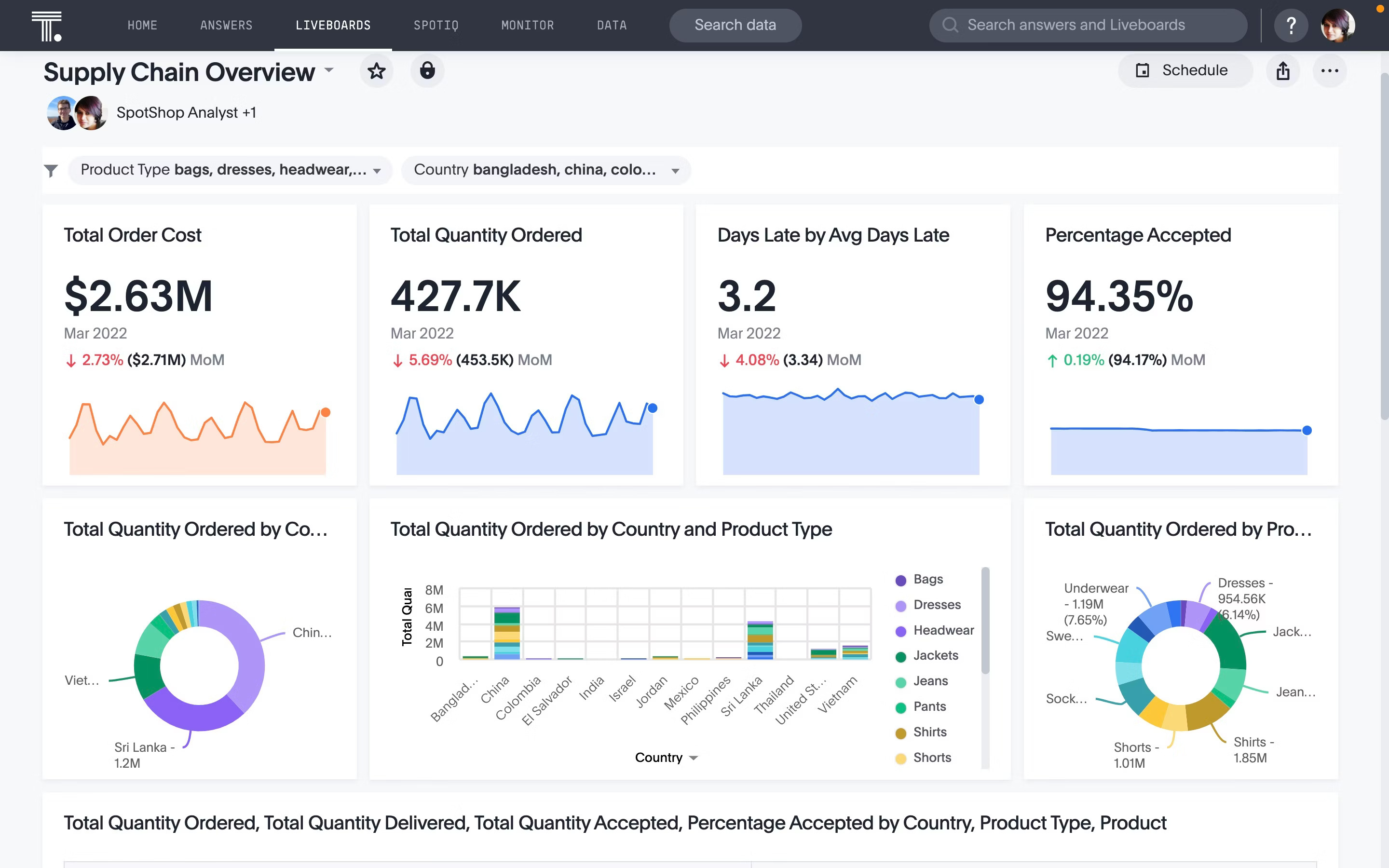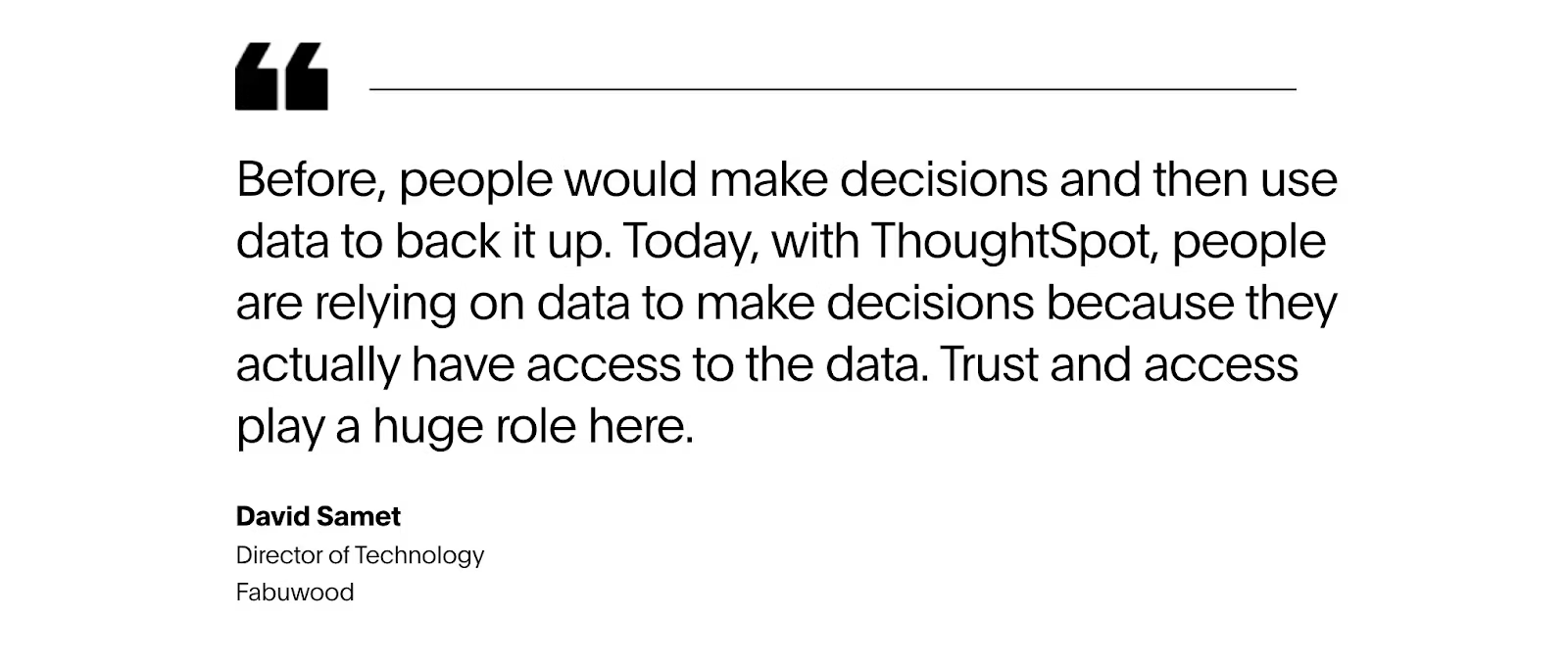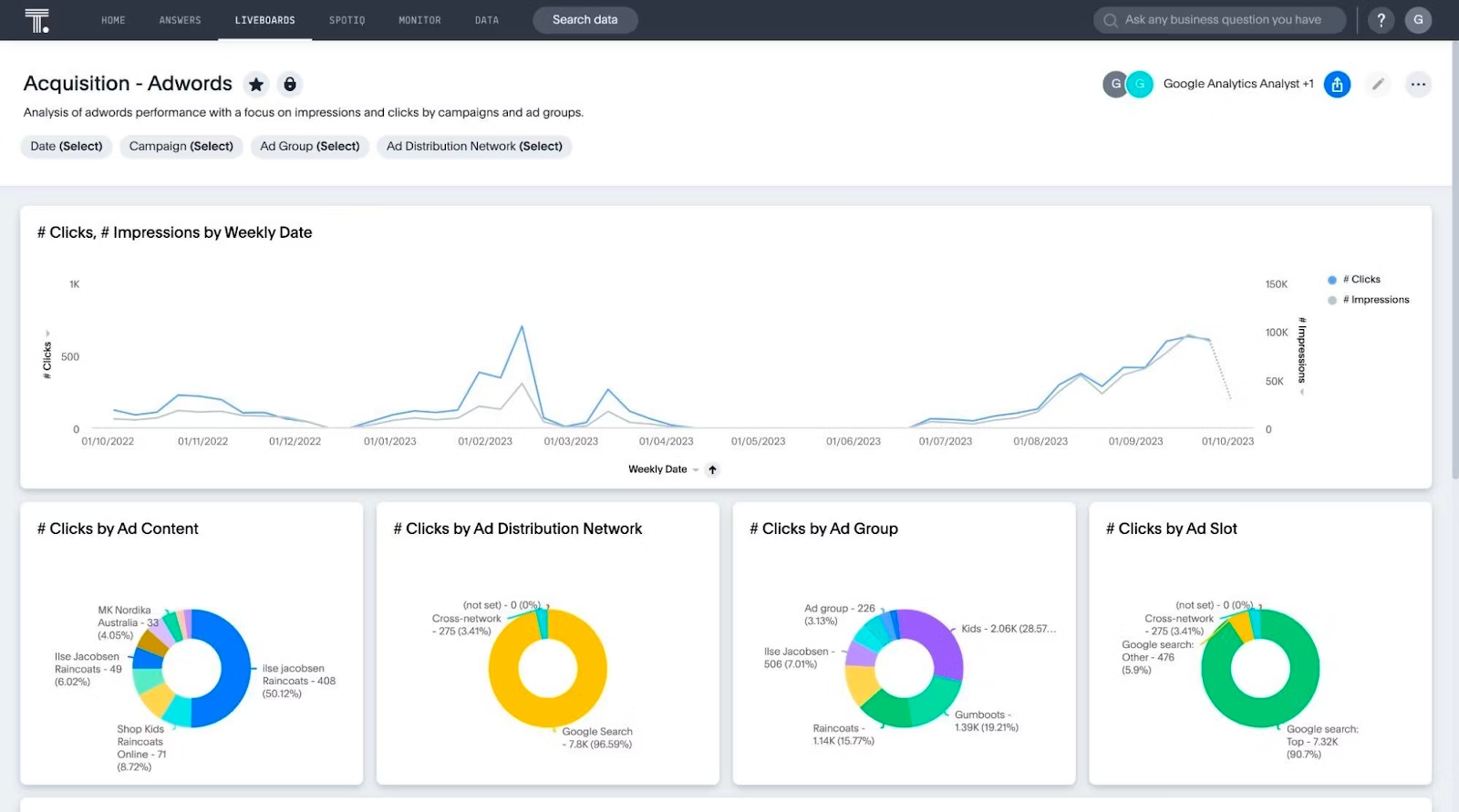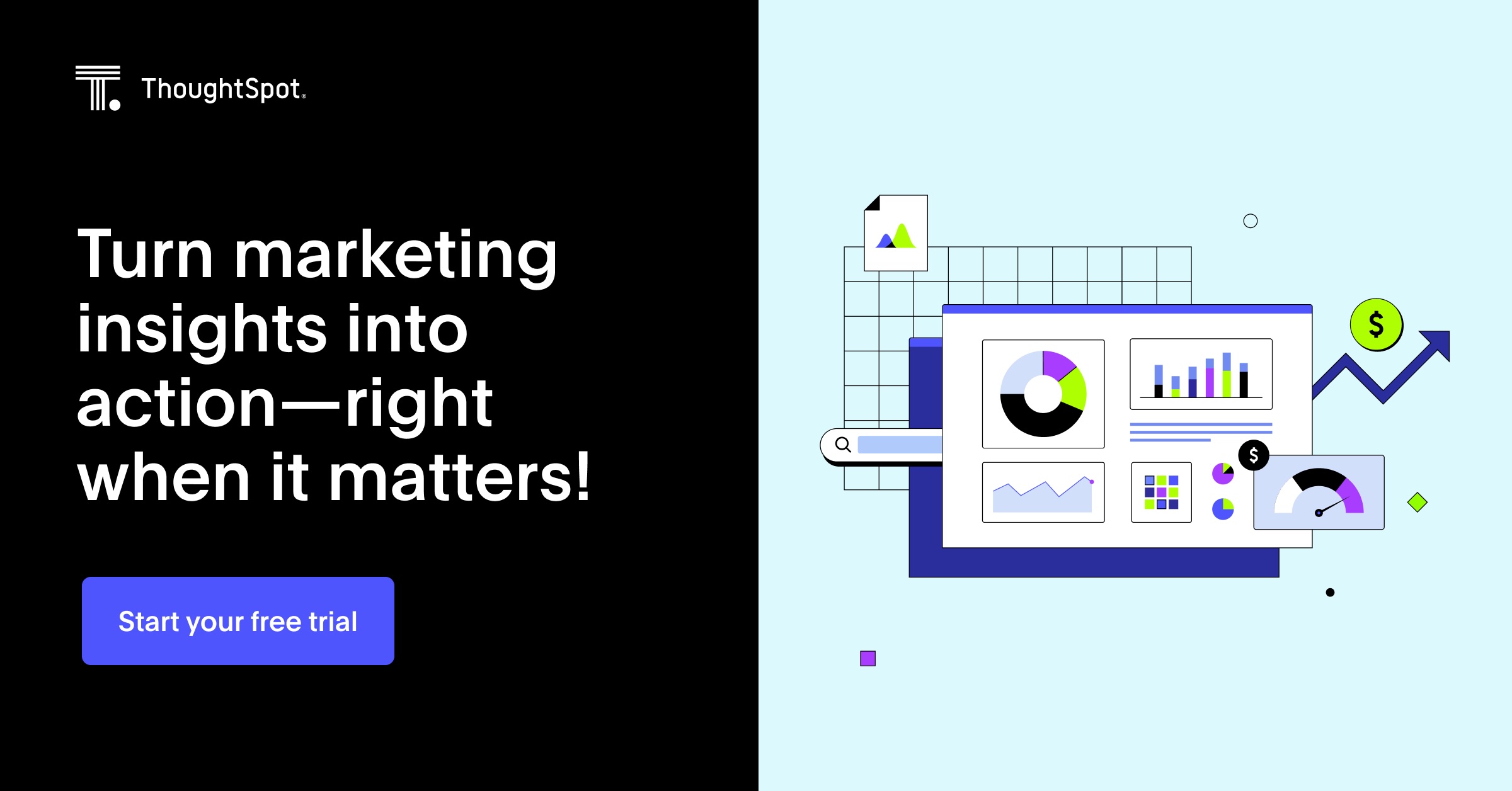As marketing evolves to keep up with changing customer expectations, more digital competition, more savvy customers, and a global marketplace, so do the technologies that support successful strategies. In today’s world, your marketing team needs to use every tool possible to boost customer acquisition, ensure a great customer experience, and—ultimately—drive revenue.
Data is the key to accurately measuring and improving your marketing performance. But data alone isn’t enough to increase your ROI. To make the most of your data, you need insights from sophisticated, intuitive, tools so you can take action.
To stay ahead of the curve and optimize your marketing efforts, you need marketing analytics, accessible and usable by everyone in your marketing team, to put your most valuable data to work. Here, we’ll take a deep dive into marketing analytics, including common challenges, benefits, and some tips to help get you started.
Table of contents:
- What is marketing analytics?
- Benefits of marketing analytics
- Types of marketing analytics
- Marketing analytics examples
- Marketing analytics tools
- Three steps for building a successful marketing data analytics program
- Marketing analytics challenges
- Modern marketing analytics for better performance
- FAQs
Marketing analytics is the practice of capturing and analyzing data to understand, track, and optimize marketing efforts to efficiently drive growth. Marketing analytics are a great example of how business analytics can help your business grow efficiently. A strong marketing analytics practice leverages metrics like campaign attribution, customer acquisition cost, and brand awareness to help you better understand marketing effectiveness and ROI.
The goal is to gather data that is mined from all marketing channels and consolidated into one platform, like a cloud data warehouse, which allows for richer insights. Having the right marketing analytics tools makes it easy to course-correct your strategy in real time and boost campaign outcomes.
For example, an ecommerce organization wants to identify top items by season in order to plan more effectively. The organization then captures customer behavior and purchasing decisions data across the end-to-end customer journey. Marketing analytics identifies a large uptick in the search, digital interaction, and subsequent purchase of a particular clothing product over the holiday season. Using those insights, the company launches a marketing campaign that targets key demographics, offers discounted sales of that product, and recommends similar products leading up to the next holiday season. The result? More sales, new customers, and a better customer experience that increase retention.

In the past, siloed data from each channel drove strategy development. Today, the competitive edge comes from embracing the modern data stack and pairing it with the right experience layer that offers transparency, actionable insights, and a deep understanding of impact. Data-driven marketing, fueled by the right analytics tools, helps marketers make informed decisions and align strategies with customer preferences across all channels. Investing in the right AI marketing analytics solution optimizes your strategies and gives a variety of key benefits.
Improve customer experience
Customer experience is a top priority for marketing leaders. Marketing analytics can unveil the quality of the customer experience at every stage, with data from each touchpoint across every channel. You can use these data-driven insights to deliver an optimized customer experience that promises unmatched value. By breaking down silos that limit transparency, the right marketing analytics tool shows you how each customer interacts with your brand.
Companies such as Harri, Just Eat, and Loan Market Group have integrated ThoughtSpot Everywhere directly into their offerings, bringing an intuitive yet cutting-edge analytics experience to their users. This move has not only delighted and retained customers but also enhanced product quality and generated more sustainable revenue streams.
Increase customer loyalty and retention
U.S. companies lose $136.8 billion per year due to avoidable customer churn. An intelligent marketing analytics platform, like ThoughtSpot, empowers you to understand not only why customers are staying, but when, how, and why they're churning so you can prevent losing them. Discover which specific efforts lead to higher customer lifetime value and loyalty rates, and use that data to create strategies that boost customer retention.
Accelerate customer acquisition and conversion
It’s not easy to determine how your marketing performance impacts customer acquisition rates and costs. Marketing analytics can take the guesswork out of the equation. The right tool can help you understand your campaigns across each channel to help your team determine which activities, strategies, demographics, products, and services result in the lowest cost per acquisition and highest conversion rates. Apply these insights to make informed decisions on where to invest your time and efforts for the greatest ROI, and identify ways to speed up acquisitions and conversions in the future.
Analyze short-term and long-term performance
Analyzing performance is key for tweaking marketing strategies as you go, for more effective campaign execution and better performance. You can report on the past, analyze the present, and predict the future with modern marketing analytics platforms like ThoughtSpot. Having such deep, cross-channel data makes it easy to see how each of your marketing initiatives have impacted revenue, how they’re currently performing in real-time, and how they might impact your goals in the long run.
Improve your industry insights
In order to remain competitive, you need visibility into both your internal marketing activities and broader industry trends. Marketing analytics technology helps you analyze your performance alongside changing demographics, market trends, and overall demand. Easily anticipate changes in your industry, identify new customers, and determine how your initiatives will impact (and be impacted by) these shifting dynamics.
Boost forecasting abilities
Consolidating marketing analytics related to your key data allows for more accurate predictions. Robust tools like ThoughtSpot take advantage of the entire modern data stack to pull in cross channel data in real-time, blend with other data sets, incorporate predictions with machine learning, then surface all of that to marketers through search and AI. Gain a clear view of future revenue so leaders can make informed decisions and better investments.
In marketing, data-driven decision-making is crucial for success. By leveraging various types of analytics, you can gain deeper insights into customer behavior, fine-tune campaigns, and forecast future trends. Each type of analytics plays a vital role in guiding strategy and navigating the complexities of the market. Below are the three key types of marketing analytics, each offering unique advantages for enhancing your marketing performance:
1. Descriptive analytics: Understanding past trends
Descriptive analytics focuses on understanding what happened in the past. In marketing, this means analyzing historical data to identify trends, patterns, and insights that can inform your future strategies. By examining data such as website traffic, social media engagement, and revenue from marketing channels, you can identify what worked well and what didn’t.
How it helps in marketing:
Campaign performance tracking: Descriptive analytics enables you to assess the effectiveness of previous campaigns, allowing you to understand which strategies drove results and which need improvement.
Customer insights: By analyzing past customer interactions, you can segment customers, identify key characteristics, and create tailored content or campaigns for similar audience segments.
Benchmarking: This type of analysis helps you compare your current performance against industry standards or competitors, providing context for decision-making.
Here at ThoughtSpot, our marketing team leverages descriptive analytics techniques like change analysis and monitor functions to track how prospects and customers engage with our campaigns. Take a look at how our team uses ThoughtSpot Liveboards to gain in-depth insights into performance metrics:
2. Predictive analytics: Anticipating future trends
Predictive analytics uses historical data and machine learning models to forecast future outcomes. In marketing, it allows you to anticipate customer behavior, identify emerging trends, and forecast campaign results. This type of analysis considers a wide range of variables, including past purchasing behavior, seasonality, and economic factors, to predict what will happen next.
How it helps in marketing:
Customer segmentation: Predictive analytics can be used to identify high-value customers, those likely to convert, or those at risk of churn. You can then prioritize efforts and resources to nurture these segments effectively.
Forecasting campaign success: By forecasting the impact of different marketing strategies, you can allocate resources more efficiently and avoid wasted spending on ineffective tactics.
Lead scoring: This helps sales teams focus on the most promising leads by predicting the likelihood of conversion based on various behavioral signals, like website visits or engagement with content.
For example, OrderPay uses ThoughtSpot to compare expected versus actual performance, helping teams predict how venues will perform after onboarding new accounts. This predictive approach allows OrderPay to track deviations from expected outcomes, such as sales performance. When discrepancies are identified, teams can take proactive steps, such as engaging with underperforming venues.
3. Prescriptive analytics: Optimizing decisions
Prescriptive analytics goes beyond predicting what will happen to recommending the best course of action. It helps you optimize decisions in real time by processing large volumes of data and modeling different scenarios. Prescriptive models can evaluate multiple potential outcomes, accounting for risks and rewards, to recommend the most profitable strategy.
How it helps in marketing:
Campaign optimization: Prescriptive analytics provides actionable insights into how to tweak your marketing campaigns for maximum impact, such as adjusting pricing, timing, or content based on customer preferences and behavior.
Personalization: By analyzing individual customer behavior in real time, prescriptive analytics can suggest personalized offers, product recommendations, and content that are most likely to engage the customer and drive conversions.
Budget allocation: With prescriptive analytics, you can make smarter decisions about where to spend your marketing budget—whether it's on paid media, content creation, or social media—to optimize the return on investment.
Take Frontify, for instance. They use ThoughtSpot to unlock actionable insights from their marketing data, helping them optimize lead generation and resource allocation. Within just five months, 75 users were able to access instant insights, transforming their marketing strategies and driving a significant boost in ROI.
1. Attribution Analysis: Marketing analytics facilitates attribution analysis by providing tools to track and analyze customer interactions across various touchpoints. It enables you to accurately attribute conversions to specific marketing channels, helping you allocate budgets effectively and optimize campaigns.
2. Customer Segmentation: With marketing analytics, you can leverage data to segment your customer base effectively. By analyzing customer demographics, behavior, and preferences, marketing analytics empowers you to create targeted segments and tailor marketing strategies accordingly, leading to higher engagement and conversion rates.
Companies like Neobank Northmill have used customer segmentation to create a more personalized banking experience. Here’s how–
After obtaining its full banking license in 2019, Northmill experienced a significant increase in both the volume and variety of its data. However, its data team found themselves spending endless hours using legacy BI reporting tools. Delayed by technical bottlenecks, including the inability to fully leverage their valuable new customer data, the bank made the decision in 2020 to transition to a more robust and future-proof modern data stack, along with implementing self-service analytics. After a thorough evaluation of three other vendors, Northmill chose ThoughtSpot in the Cloud for self-service analytics.
What moves the needle is turning insight into actions. To run a business, the ability to produce nice graphs and monitor interesting data is not even half the story—it's what you do with it that's important.
With the help of ThoughtSpot, Northmill looks closely at its user data to find out where people usually stop during the sign-up process. Using this information, the bank makes changes that have already increased the number of people who finish signing up by a huge 30%.
3. Marketing mix modeling: Marketing analytics forms the foundation for marketing mix modeling by capturing and analyzing data related to various marketing activities. With marketing analytics tools, you can assess the impact of different marketing elements on sales and revenue, allowing you to optimize your marketing mix for maximum ROI.
Fabuwood leveraged ThoughtSpot to optimize decisions across product profitability, supply chain, and manufacturing workflows. By accessing real-time data through interactive Liveboards, executives could evaluate the performance of different variables and adapt strategies instantly. This shift resulted in a unified source of truth, reducing report generation time by 96% and driving a 300% increase in data queries. ThoughtSpot enabled Fabuwood to make data-driven decisions that improved efficiency and profitability.

4. A/B testing: A/B testing compares two or more versions of a marketing asset to determine which version performs better in terms of predefined metrics. Marketing analytics tools facilitate A/B testing by providing features to track and analyze the performance of different marketing assets. Through A/B testing facilitated by marketing analytics, you can measure key metrics and make data-driven decisions to optimize marketing performance and user experiences.
In an episode of The Data Chief, Chu-Cheng Hsieh, CDO of Etsy, shared how the company’s migration to the cloud and new BI platform revolutionized its approach to A/B testing. With faster access to reliable, real-time data, Etsy’s product and marketing teams can experiment at a higher velocity. In retail, where instincts can often lead astray, this data-driven approach has enabled Etsy to make more informed decisions.
Listen to the full podcast here 🎧
1. ThoughtSpot
ThoughtSpot leads the pack in AI-driven marketing analytics, offering a seamless self-service experience for marketers. It empowers you to uncover actionable insights from data without reliance on technical teams. By enabling data exploration and real-time decision-making, ThoughtSpot helps you optimize your strategies and drive business outcomes with ease.

Core features
GenAI-powered self-service analytics: Spotter, as your AI Analyst, enables natural language queries to quickly deliver actionable insights, helping you make data-driven decisions with ease.
Personalized Liveboards: Consolidate data from all marketing channels into customizable, real-time Liveboards, allowing for dynamic tracking and analysis of key metrics.
Augmented analytics: SpotIQ automatically uncovers hidden trends and provides explanations for changes in marketing data, suggesting actionable insights for faster decision-making.
2. Google Analytics
Google Analytics is a platform that tracks website and app performance. It provides detailed insights into user behavior, traffic sources, and conversion goals. The platform allows businesses to understand how visitors interact with their websites or apps, and it helps inform decisions on improving online presence. Google Analytics is particularly valuable for those looking to monitor key metrics and analyze how online strategies are performing in real time.
Core features
Real-time reporting: Track live activity on the website and apps
Data visualization: Create customized visualizations for key website metrics
Integration with Google ecosystem: Unify performance data across Google tools
3. Zoho Analytics
Zoho Analytics is a cloud-based business intelligence and analytics platform that enables users to build reports and dashboards from their data. It allows users to transform raw data into actionable insights by offering tools for creating reports and visualizations. Zoho Analytics also includes AI-powered suggestions for identifying trends and patterns, which can help marketers and business teams make data-driven decisions.
Core features
Data visualization: Build interactive dashboards for marketing insights
Real-time monitoring: Track marketing KPIs in real-time
Integration with Zoho workspace: Combine data across Zoho tools for a comprehensive view
4. Domo
Domo is a cloud-based business intelligence platform designed to simplify data analysis and reporting. It allows users to create custom dashboards and reports from data across multiple sources. It is particularly useful for businesses looking to consolidate their data in one place for easier access and analysis.
Core features
Customizable reporting and dashboards: Personalize dashboards for marketing KPIs
Pre-built data connectors: Integrate data from various sources easily
Report sharing and collaboration: Share insights and collaborate with teams seamlessly
💡7 Best marketing analytics tools to use in 2024
A strong marketing analytics practice relies on a strategic process and the right tools for support. To build a successful marketing analytics program, start by following these tried-and-true techniques.
Step 1: Identify, capture, and analyze the right marketing metrics
Once you understand the potential ROI of marketing analytics, it’s tempting to adopt an all-or-nothing mindset. But when it comes to marketing metrics, measuring too many (or the wrong ones) can muddy the waters and make it difficult to decipher impact.
Instead, focus on choosing the metrics that best align with your business needs. If, for example, you need to boost your leads for the quarter, focus on metrics like cost per lead (CPL) and marketing qualified leads (MQLs).
Step 2: Evaluate your marketing analytics capabilities
Next, determine how your team will actually use your data to ask questions and get answers. Do you have a dedicated marketing analyst or data scientist on the payroll? Can they invest the time to thoroughly analyze and report on all of your key data across every channel?
Many marketing teams are better off with a BI reporting tool that any marketer can easily use to uncover insights and make decisions that drive performance. Look for technology that offers intuitive design and interactivity, so your team can easily access and analyze data while remaining productive.
The right tool should also be highly scalable for cloud data volumes so you can break silos and unify data without limitations. And with so much data, the platform you choose needs to be infused with AI to help find hidden insights through self-service analytics. Actionable tools like ThoughtSpot also provide insights that can be used to trigger actions elsewhere in the marketing tech stack, like within your favorite business apps. That level of integration can help you get the most out of your marketing analytics for smarter decisions.
Step 3: Take action on marketing insights
With the right tech and data in place, use your newfound insights to drive meaningful action. Leverage your marketing analytics to determine a new use case that delivers business value and can be influenced by analytics. Plan your rollout by finding a group of individuals with high pain related to your use case, test with them, get feedback, and then improve as you widen your circle.
It’s vital to have data literacy training (complete with a data dictionary) built into your program. Your insights are only beneficial if your team understands what they’re looking at. The platform should offer training tools for accelerating adoption and increasing user knowledge.
When optimized, marketing analytics opens the door for data-driven marketing decisions that improve your bottom line. Whether you’re at a small startup or a large enterprise, translating your data into actionable drivers can be a struggle. Here are some common challenges.
Unifying data
Collecting large amounts of data from various marketing channels just doesn’t cut it, especially if that data lives in multiple, disparate places. Manually capturing and measuring data in separate spreadsheets and programs leads to silos, lost information, and limited insight into your marketing performance. It’s a struggle to integrate data from spreadsheets and disconnected tools, which makes that data nearly useless for accurately tracking your success and allows varying interpretations of data based on individual tools.
For instance, if you work for a coffee chain and are looking at sales in one geographical location that has a drop in sales of iced coffee, you may think there's a need for a campaign to increase sales of iced coffee. However, if you don't have data for weather, you may miss that the drop in sales of iced coffee in that location was due to a weather change, not due to customers purchasing their coffee elsewhere.
Proving value
Proving the ROI of your marketing initiatives requires more than just reporting monthly outcomes or building traditional marketing dashboards. Cost-per-acquisition and engagement rate only tell part of the story—they don’t reveal how and why marketing activities affect your bottom line. Without the right understanding of marketing analytics, proving value to others in your organization can be a challenge.
Insights disconnected from action
In some organizations, a time lag or siloed information can cause marketing analytics insights to become disconnected from action. Reporting just to fulfill a monthly obligation means your team misses out on key insights to make revenue-boosting decisions. Plus, you can’t course correct your performance to prevent hits to your bottom line. Challenges can also arise when insights have to be analyzed in one system but acted on in another, causing further disconnection.
Tool complexity
Many marketing analytics tools require deep technical literacy that most marketers just don't have. Tool complexity can be a barrier to marketers being able to interpret and act on data in an effective and proactive way. If a non-marketing technology expert is required to use and understand a tool for marketing analytics, this separates the data from the people who need to use it, which can increase errors.
Forecasting
You need proper forecasting in order to identify potential opportunities, enable data-driven decisions, and predict future revenue. But it’s nearly impossible to accurately forecast if you don’t have a holistic understanding of performance across each channel or if you don’t use the right metrics. Without a detailed, unified view of historical data and the ability to accurately predict outcomes, you simply can’t decipher which parts of your marketing strategy will create the most profitable change moving forward.
In order to outperform your competitors and delight your customers, you need to understand the data that shows not only how you've performed in the past, but signals your future. Simply capturing and unifying the data isn't enough. It needs to be put in the hands of every marketer in order to understand the past, inform the present, and plan for the future. That's only possible with intelligent marketing analytics tools. To get the most of your data—and to gain deep insights that better inform your analytics strategy—you need intelligent marketing analytics tools.
With Live Analytics from ThoughtSpot, every marketer can analyze, create, and operationalize insights from all of your data to make smarter decisions at the point of impact. Start a 14 day free-trial to see how you can deliver remarkable marketing with ThoughtSpot.
1. What are the 4 C's of marketing analysis?
The 4 C’s of marketing analytics represent key factors that help businesses understand and optimize their marketing strategies:
Customer: Understanding customer needs, behaviors, and preferences to tailor marketing efforts.
Cost: Analyzing the costs associated with marketing efforts to ensure efficiency and maximize ROI.
Convenience: Focusing on how easily customers can access products or services, including through distribution channels.
Communication: Ensuring clear, effective communication with customers, enhancing engagement and fostering brand loyalty.
2. How important is marketing analytics?
Marketing analytics is crucial because it provides data-driven insights that help businesses understand customer behavior, optimize campaigns, and allocate resources efficiently. By analyzing data, companies can track the effectiveness of marketing efforts, identify trends, and make informed decisions to boost ROI. It helps businesses stay competitive by continuously improving their marketing strategies based on real-time performance data.
3. Who uses marketing analytics?
Marketing analytics is used by a wide range of professionals within an organization, including marketing managers, data analysts, product managers, and business executives. Essentially, anyone responsible for strategic decision-making in marketing can benefit from it.
4. What is a marketing analytics tool?
A marketing analytics tool is software designed to track, measure, and analyze marketing data to improve decision-making. These tools collect data from various marketing channels—such as social media (including LinkedIn analytics), email campaigns, and websites—and present it in a way that allows businesses to identify trends, customer behavior, campaign performance, and areas for improvement.
5. What is the best marketing tool for analytics?
The best marketing analytics tool depends on the specific needs of the business. However, ThoughtSpot stands out as a top choice due to its advanced analytics capabilities, combining AI-driven insights with intuitive search functionality. It enables marketers to quickly gain actionable insights from their data, optimize campaigns, and drive business growth.










